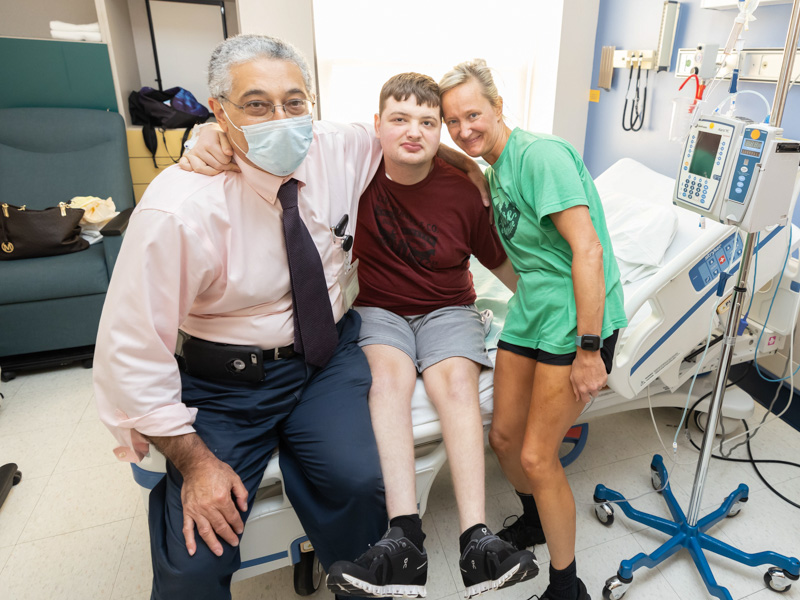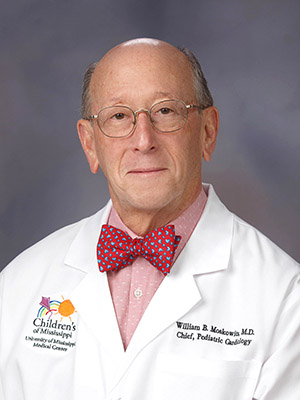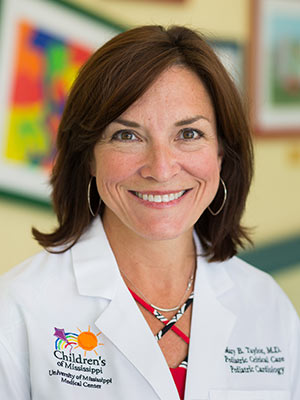Children’s Heart Center one of select few to access newly approved heart valve

Cameron Kittrell needed a new heart valve as part of treatment for a congenital heart condition. Less than a year ago, a 39-millimeter valve would have meant open-heart surgery, but not now.
Cameron received a new valve through a catheter-based procedure and was able to return home from Children’s of Mississippi the next day. The catheterization was performed by Dr. Makram Ebeid, director of pediatric interventional cardiology and the pediatric catheterization lab, part of the Children’s Heart Center at the state’s only children’s hospital.
The valve, the Edwards SAPIEN 3 transcatheter with an Alterra adaptive prestent, was approved by the FDA Dec. 20, 2021, for patients with severe pulmonary regurgitation. In these patients, blood flows backward into the heart instead of being pumped only forward.

“Although open-heart surgery is an amazing feat of modern medicine, it is incredibly invasive and an extremely stressful event for the patient and their parents,” said Cameron’s father, R. Lee Kittrell of Brandon. “Knowing that this device was now available and that Dr. Ebeid, who has been with us since the beginning, would be the one performing the procedure made this event seem almost as smooth as a simple CT scan.”
Cameron was born with pulmonary atresia, a condition in which the pulmonary valve does not form. About one in every 7,100 babies are born with pulmonary atresia in the U.S. each year. Congenital heart conditions are the most common type of birth defect, affecting one out of every 100 babies.

“He underwent many caths and surgeries,” Ebeid said. “Part of the surgeries involved enlarging the pulmonary valve, and that usually results in pulmonary regurgitation. This is also common in many other congenital heart conditions.”
Kittrell said Ebeid "has always been wonderful in fully explaining the condition of the regurgitation within the right ventricle due to the absence of the valve, so we always knew that one day this would require correction.”
Pulmonary atresia patients often need valve placement, Ebeid said, “Usually, the valve is placed surgically, requiring a bypass machine and intensive care.”
The Children’s Heart Center was able to access the new valve after Ebeid was among the few in the U.S. and the world to get early hands-on training with the device. He traveled in late 2021 to get additional training on this new valve and examine it closely. After being convinced it would be a great treatment for patients, he brought it to Mississippi.

“Dr. Ebeid continues to provide the children of Mississippi state-of-the-art, world-class heart care,” said Dr. William Moskowitz, professor and chief of the Division of Pediatric Cardiology at UMMC and co-director of the Children’s Heart Center. “This newly approved heart valve that is delivered through a catheterization procedure rather than an open-heart surgery procedure is of tremendous benefit to these children, adolescents and young adults. Because they have undergone prior open-heart procedures, the opportunity to avoid another open chest, open-heart procedure is a fantastic option.”
Children’s of Mississippi has expanded the placement of valves in its new pediatric catheterization lab at the Children’s Heart Center in the Kathy and Joe Sanderson Tower. The new Edwards valve, Ebeid said, “expanded the cath placement of valves to patients who would otherwise have needed open heart surgery.”

Dr. Mary Taylor, Suzan B. Thames Chair and professor of pediatrics, said the children’s hospital is “so fortunate to have such a wonderful cardiac catheterization laboratory in the new Sanderson Tower, but most importantly, we have a wonderful team. Dr. Ebeid is at the heart of that team, always caring for children as if they were his own. We are grateful for his innovative spirit, and I am thrilled that Cameron was able to have this new procedure here at Children’s of Mississippi.”
Cameron was transferred to the neonatal intensive care unit at the University of Mississippi Medical Center shortly after he was born. Weeks after heart surgery in Cleveland, Ohio, Cameron’s heart stopped at a visit with his pediatrician, and he was on his way to the Medical Center.
“Dr. Ebeid said he would be waiting for Cameron to arrive in the emergency department,” Kittrell said. “After Dr. Ebeid’s third attempt, Cameron’s heart started beating again.” After being in a coma four days, Cameron’s brain activity increased dramatically.
“We were told that his quality of life may not be very high and that he would probably never walk,” Kittrell said, “but he not only walked eventually, he ran! He could climb on playsets and swing on swing sets and chase dogs and do just about anything that any other little boy could do. Along the way, he required additional palliative procedures performed by catheterization by Dr. Ebeid and other surgeries.”
An atrial flutter in 2014 led to Cameron being on a heart-lung bypass machine in pediatric intensive care. “Thanks to the wonderful, skilled staff at the PICU and divine intervention, Cameron’s heart began to beat once again,” his father said. “Following this event, there have been several challenges, and Cameron has had to learn to walk and talk again, and he transitioned off a tracheotomy that he only needed for two weeks and a feeding tube. He has continued to progress wonderfully.”
Now that Cameron is home, he enjoys going to church, eating at Mexican restaurants and making friends wherever he goes. “He is a social butterfly,” Kittrell said.


